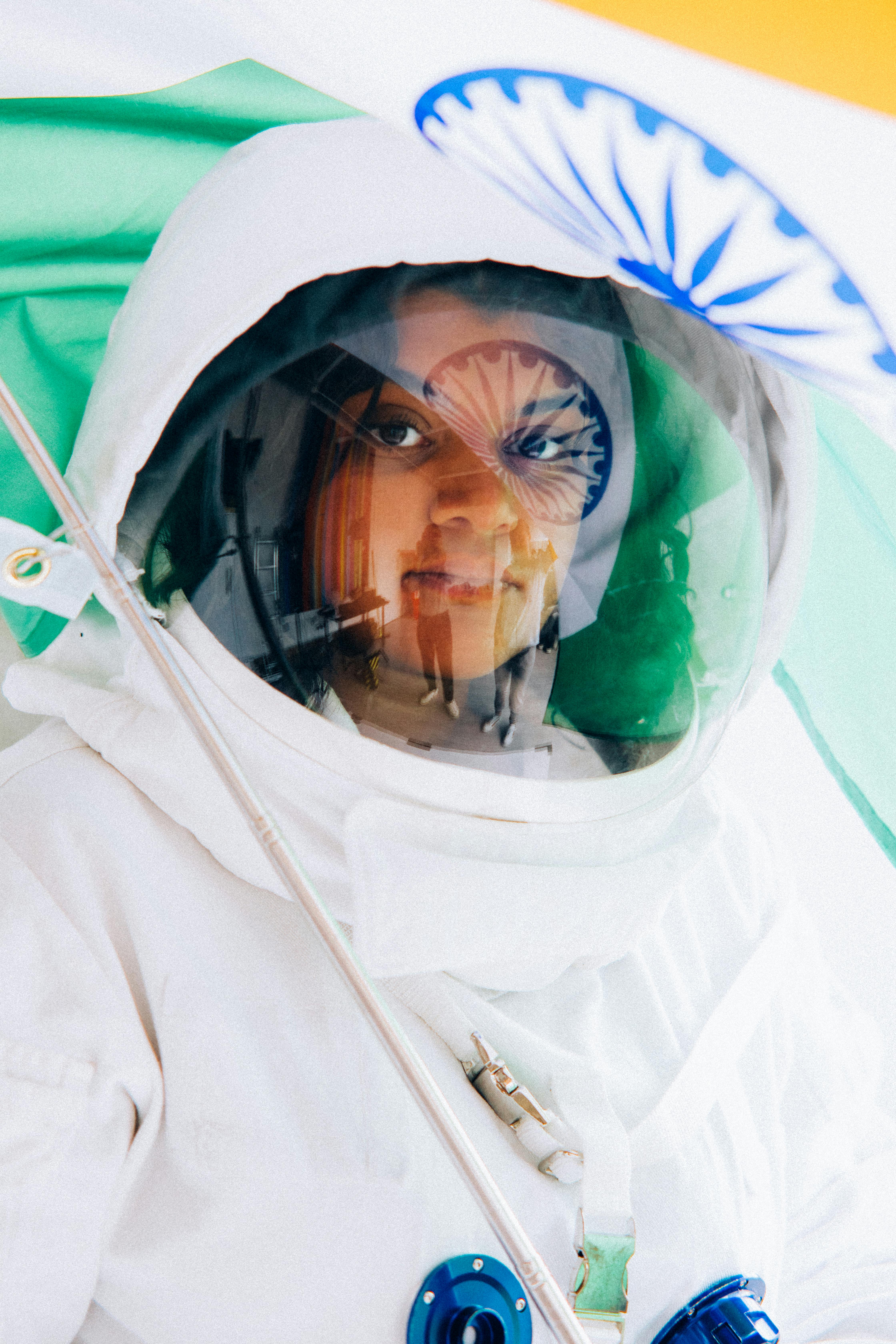
Introduction
The space race has recently witnessed an emotional chapter for India. High above the Earth, where boundaries vanish and humanity is unified in orbit, a remarkable achievement was made by Group Captain Shubanshu Shukla, a test pilot of the Indian Air Force. He became the first Indian astronaut to successfully rendezvous with the International Space Station (ISS) aboard the Dragon SpaceCraft as part of Axiom Mission 4. This event signifies not just a personal achievement for Shukla, but serves as a crucial milestone for a nation rapidly developing its space ambitions.
India has been making strides in space exploration, from launching satellites to sending citizens to the classroom of the cosmos, with aspirations extending to the Moon and beyond. In this blog post, we will delve into Shukla’s journey, the technological marvels behind the Axiom Mission 4, scientific contributions to the ISS, and what the future holds for India in the vast expanse of space.
Shubanshu Shukla | From Gandhinagar to the Stars
Born in Gujarat, Group Captain Shukla’s journey is a testament to personal determination and growing confidence in India’s capabilities in space. As an Indian Air Force test pilot, he spent years exploring the limits of aviation technology. The ISS mission represents a significant leap into the unknown and takes Shukla’s achievements to new heights—literally and figuratively.
Launched from Cape Canaveral aboard SpaceX’s Falcon 9, this mission is part of a commercial partnership between Axiom Space and NASA designed to bring astronauts together from around the globe to the ISS. Shukla’s groundbreaking role signifies a notable moment: India’s first human presence in the world’s most advanced space laboratory.
Axiom Mission 4 and the Technology Behind It
Riding in a Dragon capsule named ‘Grace’, Shukla experienced the zenith of 21st-century space engineering. Falcon 9 rockets, which are known for their reusability, propelled the crew into orbit with extraordinary precision and efficiency—a hallmark of SpaceX, demonstrated in numerous successful launches.
The Dragon capsule is an engineering wonder equipped with autonomous docking capabilities, life support systems, touch screen controls, and advanced thermal shields, offering Shukla an unparalleled experience of cutting-edge aerospace innovation. More than just comfort, this mission also fostered vital connections with operational space systems that will directly benefit India’s upcoming crewed missions.
Research in Orbit | India’s Scientific Contribution to the ISS
Upon arriving at the ISS, Shukla didn’t just sit back as a passenger; he engaged actively as a researcher. Collaborating with scientists from NASA and ISRO, he conducted a series of India-led microgravity experiments. Highlights of his research include:
- Testing the effects of microgravity on microbial growth, which is paramount for long-term space missions.
- Analyzing how astronauts interact with electronic screens in zero-gravity environments—a vital step for the development of future crew vehicles.
This endeavor is not merely academic. The results from these experiments will feed directly into India’s Gaganyaan Human Spacecraft program, arming Indian scientists with knowledge that could not be acquired on Earth.
The Gaganyaan Connection | India’s Indigenous Space Dream
The Gaganyaan mission aims to send astronauts into Earth’s orbit aboard domestically developed rockets, specifically the human-rated LVM3. Delays due to the pandemic and technical evaluations have postponed this aspiration; however, insights gleaned from the ISS mission have provided real-world experience that is invaluable for the Gaganyaan program.
Shukla’s Insights from the ISS:
- Astronaut training and mental preparedness.
- Demonstration of life support systems in space.
- Troubleshooting and system diagnostics aboard the spacecraft.
ISRO is currently testing its own Environmental Control and Life Support Systems (ECLSS) necessary for Gaganyaan, involving cutting-edge waste recycling, food systems, and thermal regulation technologies. Shukla’s hands-on feedback will be vital in refining these processes.
India’s Future in Space: Advancing from Lunar Landings to Space Stations
India’s ambitions do not end with reaching Earth’s orbit. Following the triumphant Chandrayaan-3 and Aditya-L1 missions, the nation’s planned agenda is both ambitious and exciting:
- Chandrayaan-4, India’s maiden Lunar Sample Return Mission.
- Development of an Indian Space Station, slated for 2030.
- Research into advanced robotics and autonomous docking technology.
- This mission serves as a stepping stone towards achieving these grandiose goals.
The Rise of India’s Private Space Sector
While ISRO continues to spearhead these initiatives, India’s private space sector is emerging as a critical player. The ISS mission exemplifies how government collaborations with private enterprises can shape the landscape of the space sector in the coming decade.
- Skyroot Aerospace is conducting tests on reusable rocket technology.
- Agnikul Cosmos is developing mobile launch pads and 3D-printed engines.
- Pixxel specializes in hyperspectral imaging satellites that can analyze crop health to mineral deposits from space.
With the support of infrastructure from the Indian National Space Promotion and Authorization Center, these startups have the potential to significantly contribute to future Indian space missions and beyond.
Conclusion | A Nation Unites
What began as a remarkable launch from the coast of Florida resonates across India. Group Captain Shubanshu Shukla’s mission is not merely about personal accolades; it embodies national progress.
His presence aboard the ISS elevates India not only as a participant but as a contender in the global space arena. The data, experiences, and partnerships forged during this mission will lay the foundation for a new era—one where Indian astronauts, startups, and scientists collaborate seamlessly in the realm of space exploration.
The countdown is complete. The mission continues, and India’s journey to the stars is just beginning.